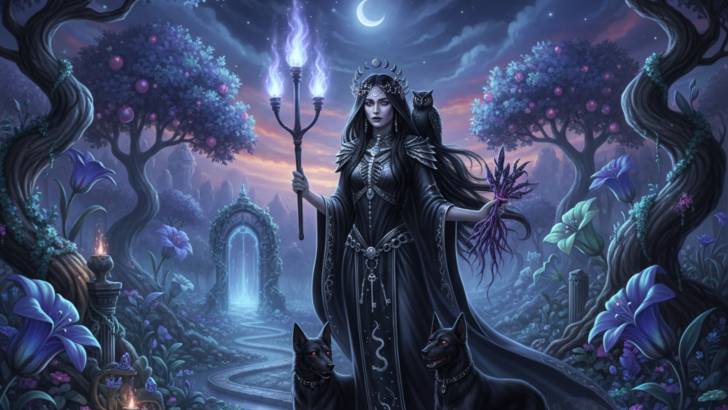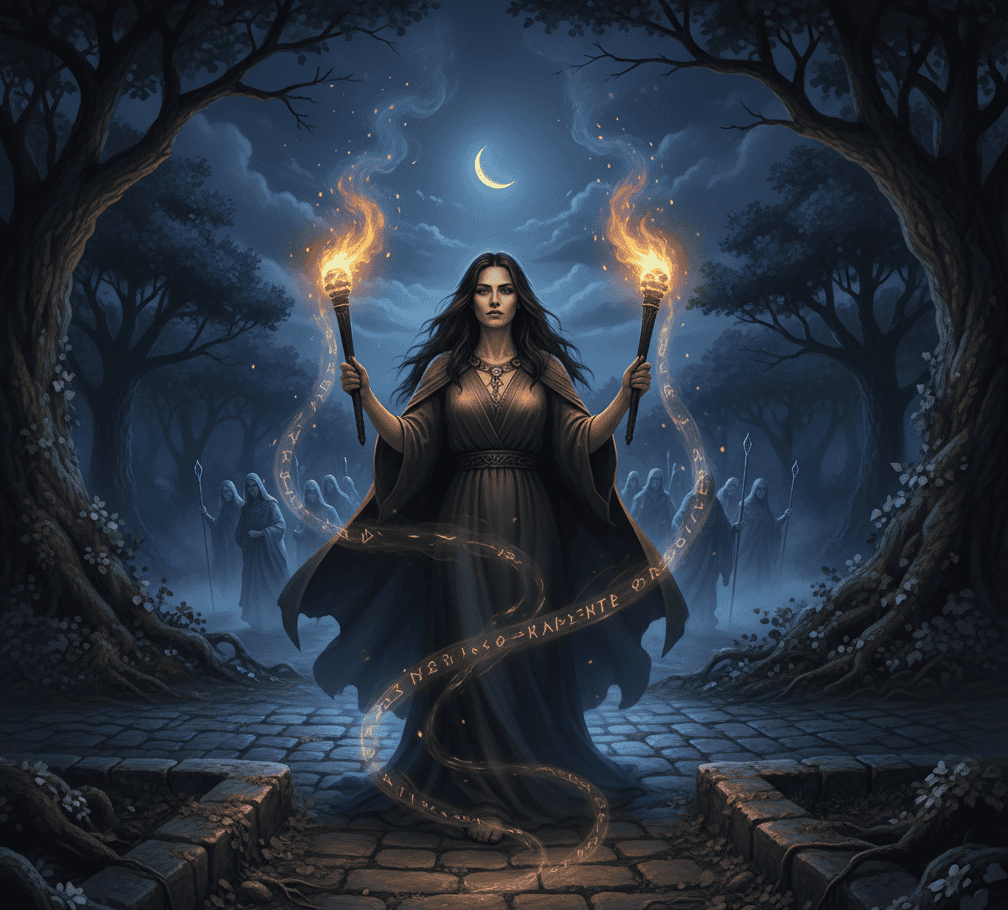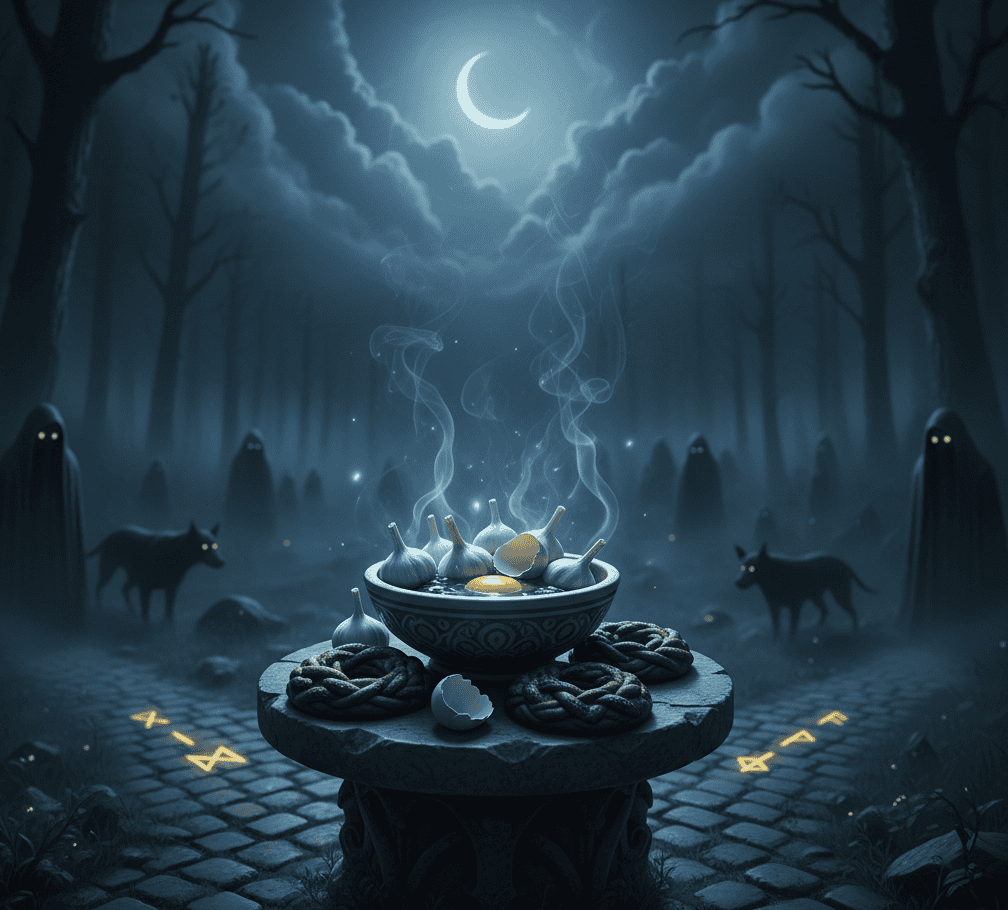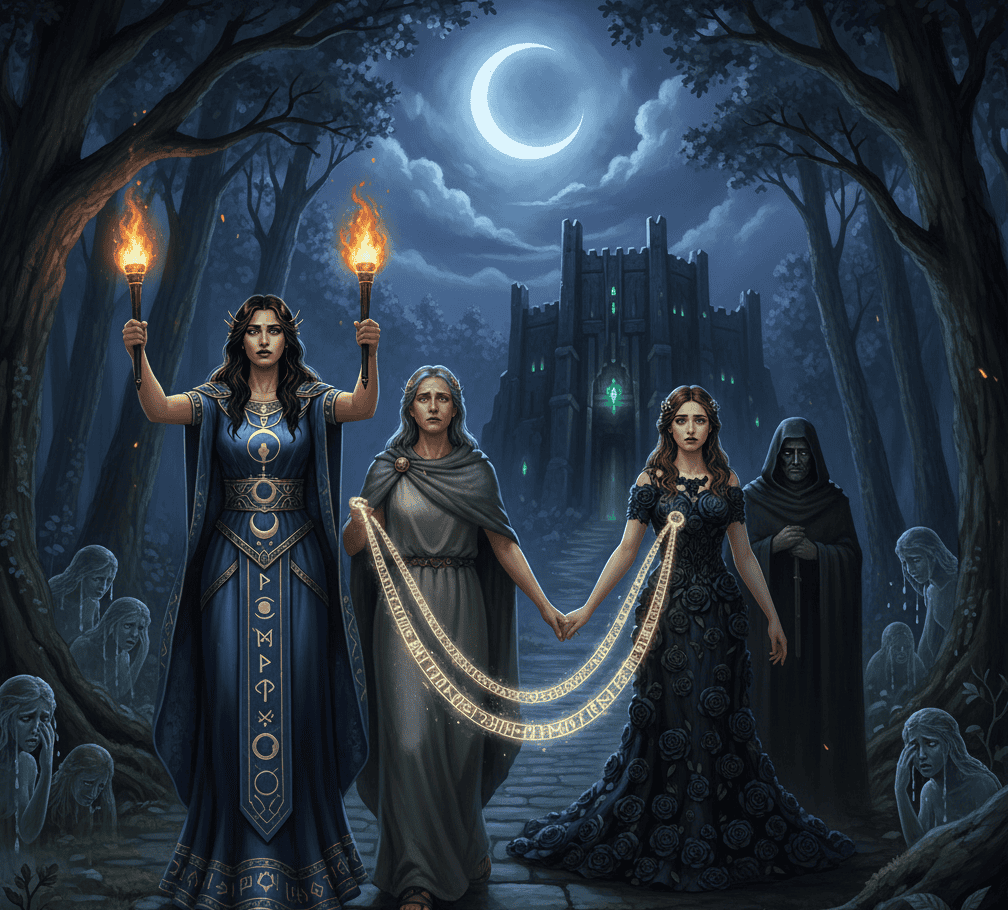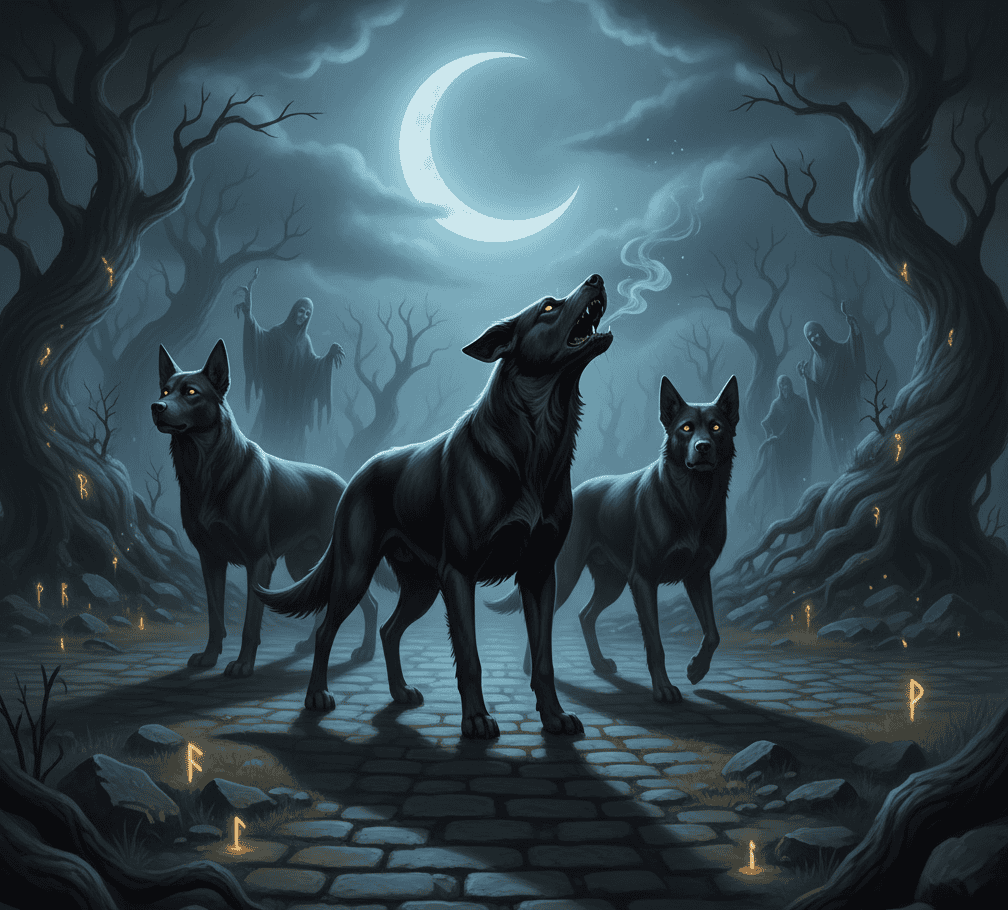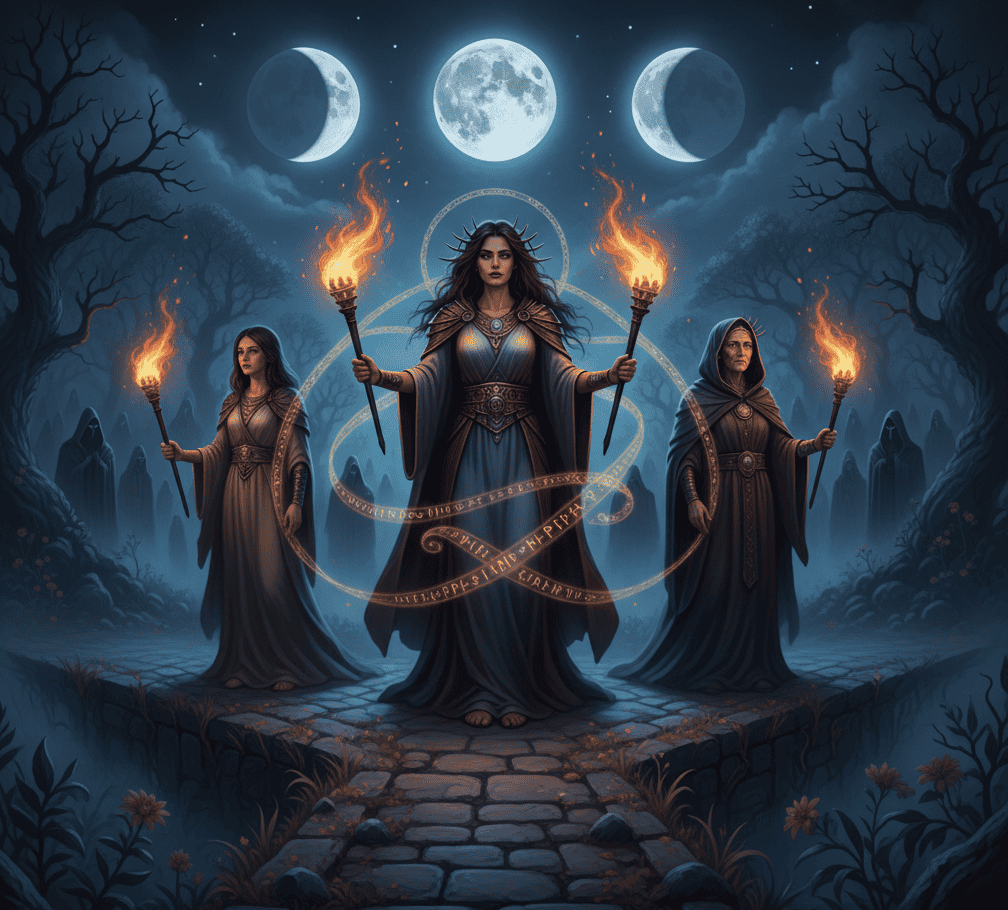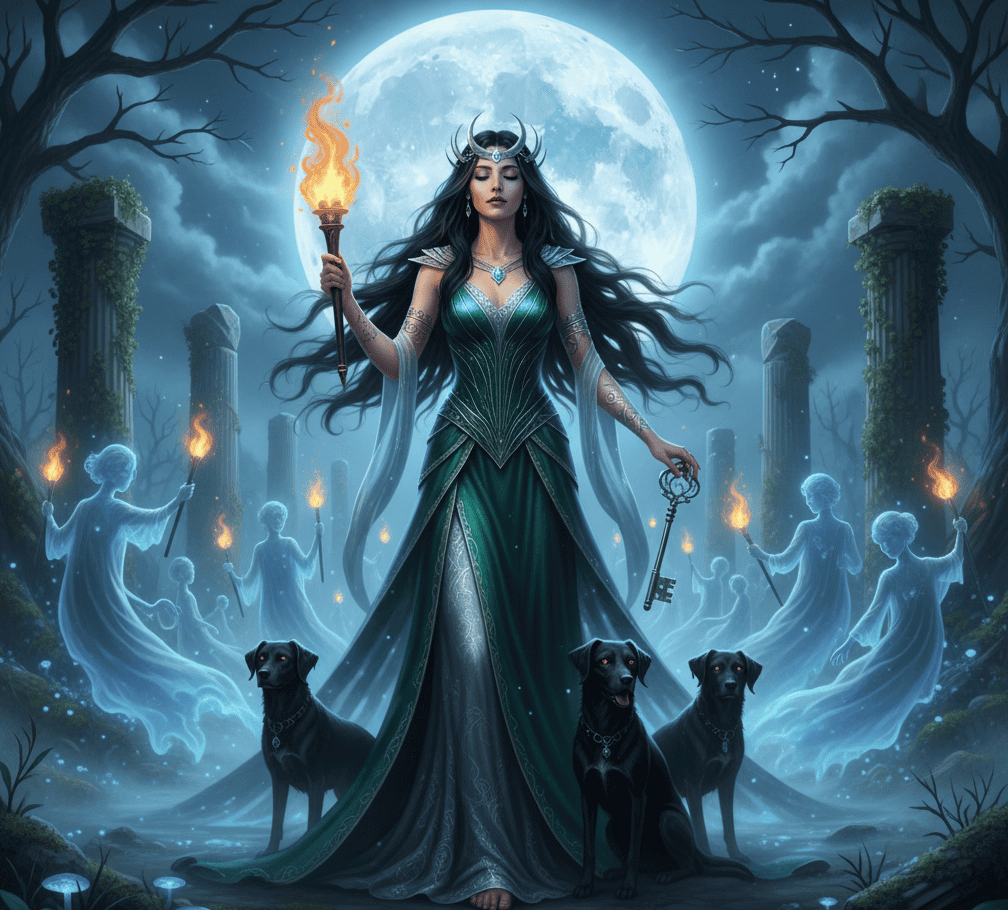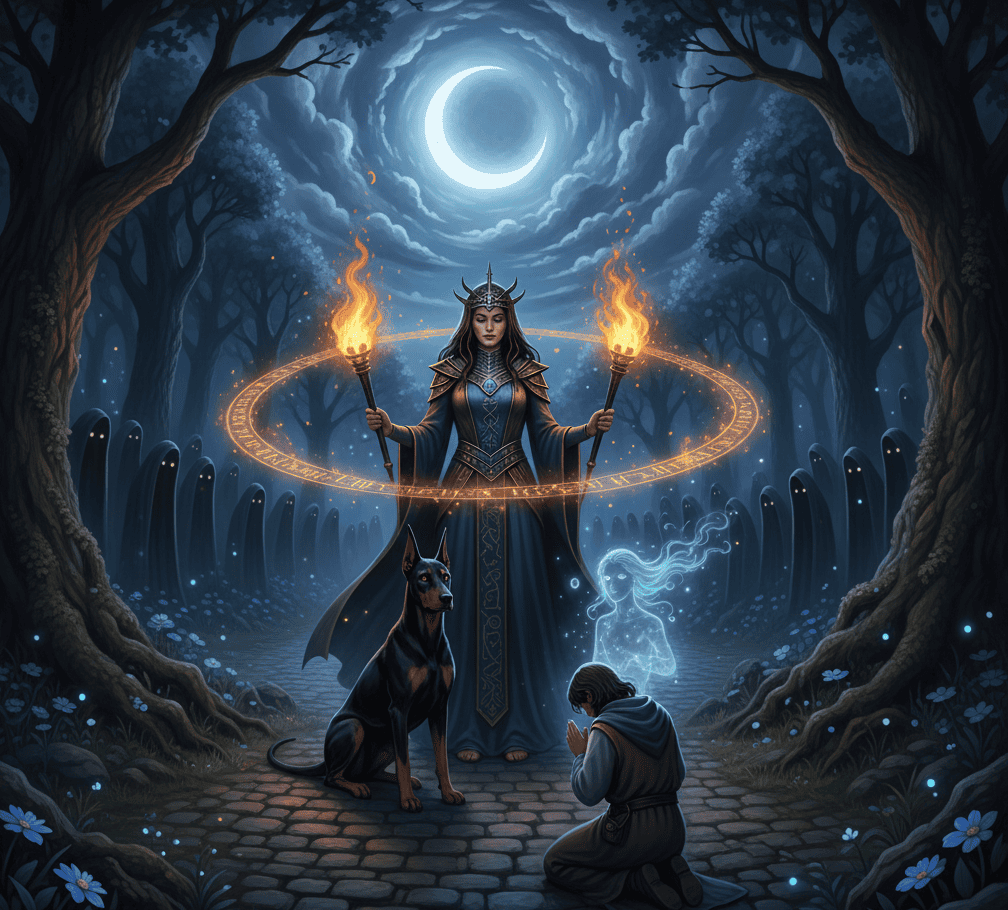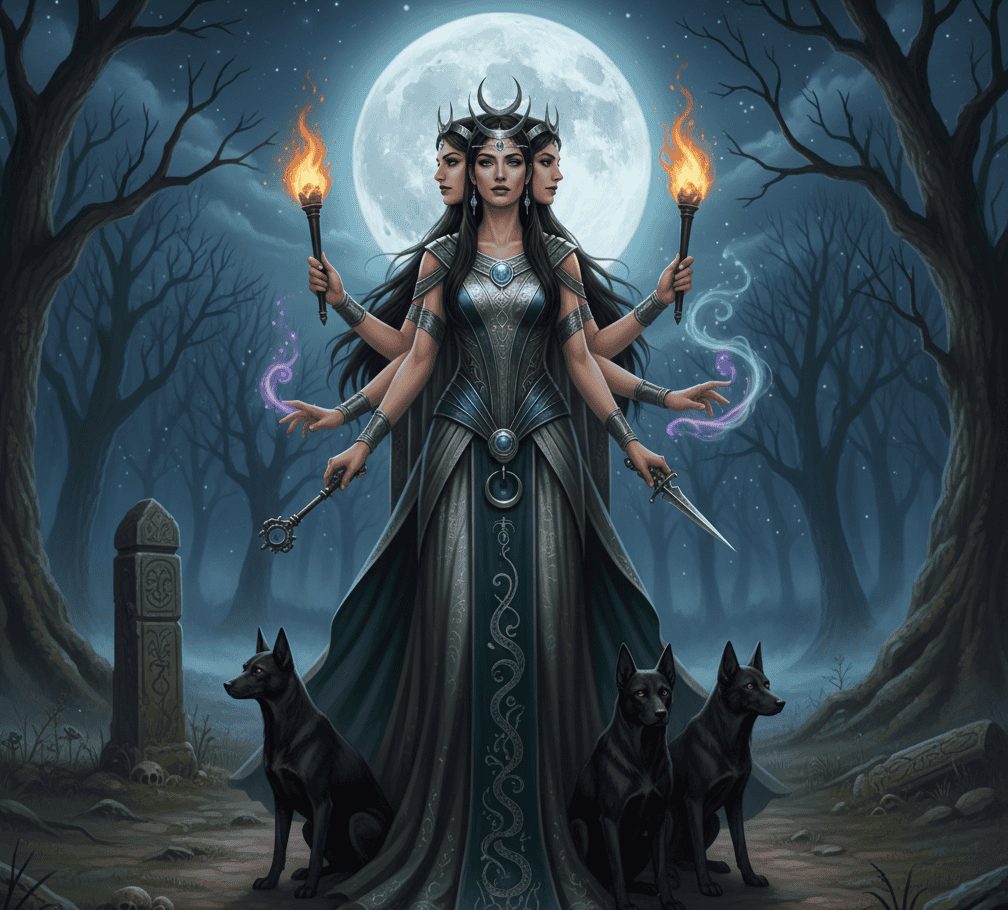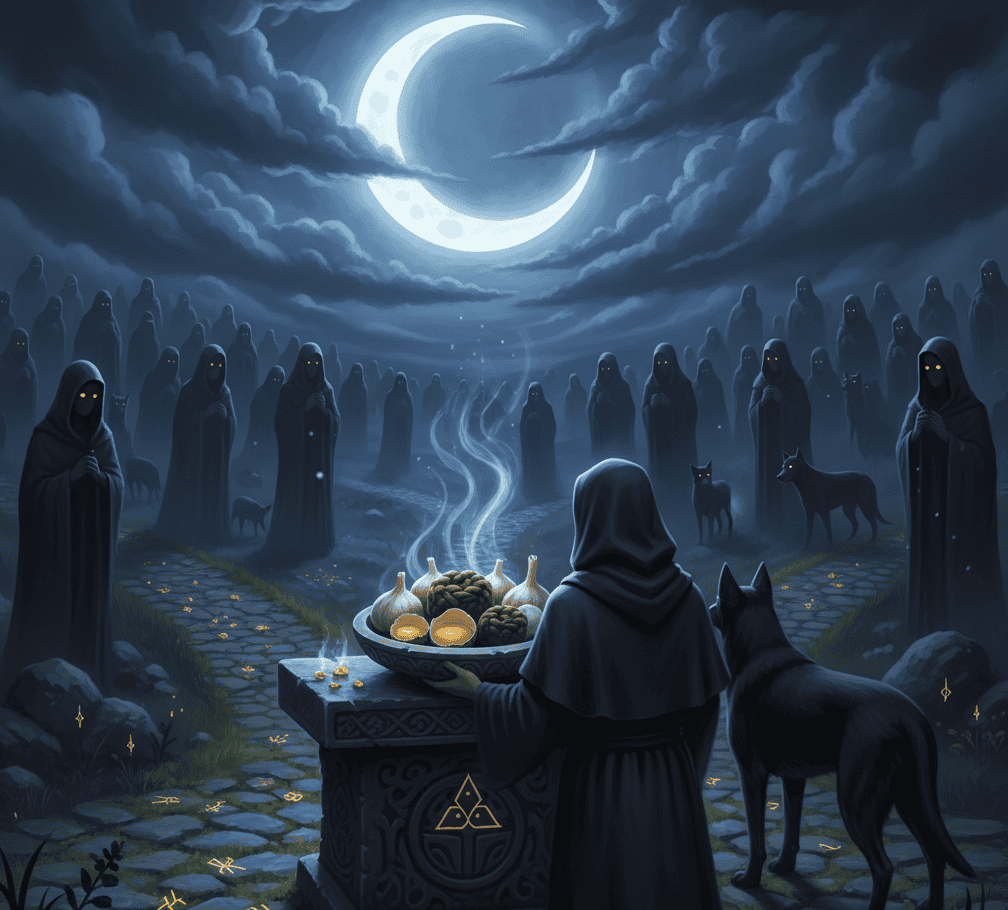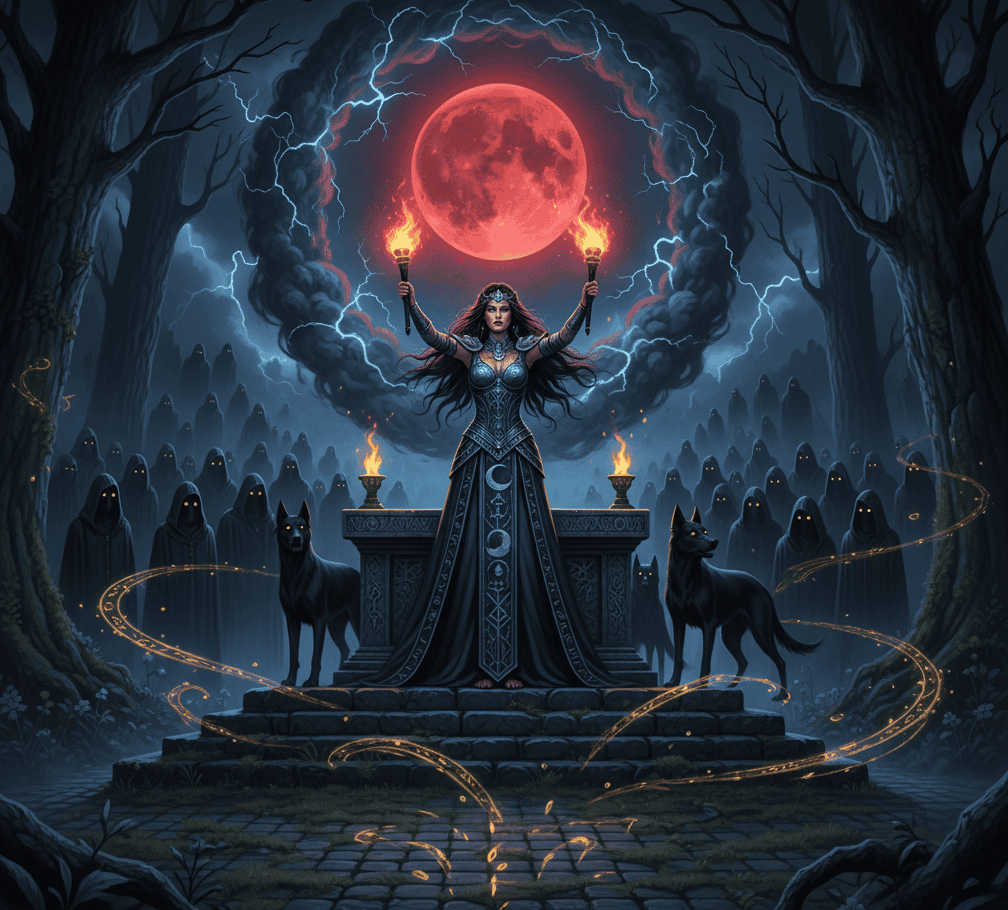Hecate is one of those figures in Greek mythology who seems to stand at the edge of the torchlight – never fully in the spotlight, but always powerful and compelling.
Known as the goddess of magic, crossroads, spirits, and mysteries, she was also deeply tied to the night and the moon.
Ancient people looked to her when they felt the presence of shadows, when they stood at a fork in the road, or when they sought guidance under the silver light of the moon.
Myths about her show her as both protector and frightening presence, a guide in darkness and a guardian of hidden paths.
Let’s wander through ten myths and traditions that portray Hecate as the eternal guardian of the night and the moon.
1. Hecate And The Torches Of The Night
One of the most enduring myths about Hecate is her role as a torchbearer. She was often described carrying twin torches that burned brightly in the dark.
These were not ordinary flames—they symbolized her power to guide travelers and spirits safely through the night.
Her torches represented illumination in uncertainty, the light you need when choices must be made.
Travelers at night would whisper her name for safe passage, believing that she lit the way at dangerous crossroads.
For many, her torches weren’t just fire—they were symbols of hope that even in the darkest night, there was a guide who could see what you could not.
2. Hecate’s Connection To The New Moon
The new moon phase, when the sky goes dark, was considered sacred to Hecate. People called this time Hekate’s Deipnon, a night when offerings were left at crossroads to honor her and to appease restless spirits.
Food such as garlic, eggs, and cakes were placed outside at night, often left where three paths met.
These offerings were meant both to thank Hecate for protection and to ensure that wandering spirits would not cause harm.
In this way, the darkest phase of the moon became her festival, reminding people that Hecate’s guardianship was strongest in shadow.
3. Hecate As Companion Of Persephone
When Persephone was abducted by Hades and taken into the underworld, Demeter wandered the earth in grief, searching for her daughter.
In that myth, Hecate was one of the few deities who aided in the search. Carrying her torches, she guided Demeter through the darkness until they discovered Persephone’s fate.
Later, when Persephone became queen of the underworld, Hecate became her companion and guide.
She moved freely between the upper world and the underworld, embodying the link between moonlit night and the shadowy realm of the dead.
This story solidified her as a guardian who could travel where others could not, making her both an ally and a protector in the most terrifying spaces.
4. The Dogs Of The Moonlit Crossroads
Hecate was often depicted accompanied by black dogs, animals strongly tied to the night. Ancient people claimed that dogs howling at the moon were signs of her presence.
These creatures were believed to guard sacred entrances and alert mortals when spirits were near.
In myth, Hecate’s dogs were not ordinary companions—they were guardians in their own right, representing loyalty, protection, and the fierce defense of thresholds.
If you stood at a moonlit crossroads and heard dogs barking in the distance, it was said to be Hecate’s pack roaming the night, protecting the boundary between worlds.
5. Hecate And The Lunar Triple Form
Hecate was often portrayed as a triple goddess, embodying three forms or faces. This symbolism aligned her with the phases of the moon: waxing, full, and waning.
Each face represented a different aspect of her power—youth, maturity, and wisdom.
Myths describe her as standing at the meeting of three paths, with three bodies and three torches, seeing in all directions at once.
Just as the moon changes but remains constant, Hecate’s triple form reflected her eternal watch over all transitions—birth, life, and death.
To those who worshiped her, this lunar image made her the ultimate guardian of cycles and change.
6. The Night Processions
One of the most fascinating myths about Hecate involves her nightly processions.
Ancient writers described her moving through the darkness with a train of ghosts, spirits, and animals, accompanied by the glow of her torches and the howls of dogs.
These processions were not seen as terrifying attacks but as reminders of her role in overseeing the night.
She was believed to lead lost souls to their proper resting place or to escort restless spirits back to the underworld.
Seeing such a procession was rare, but if you caught even a glimpse, it was a reminder that the night belonged to Hecate.
7. Hecate And The Moon’s Magic
The moon has always been associated with magic, and Hecate was no exception. Myths portray her as the goddess who gave witches their power, particularly at night under moonlight.
She was said to whisper spells into the ears of her followers, granting them knowledge of herbs, charms, and incantations.
Her guardianship of the moon meant she was the keeper of hidden knowledge.
Just as the moon reveals only part of its face at a time, Hecate revealed her secrets gradually, to those who showed devotion.
This myth connected her to the cycles of magic, waxing and waning like the moon itself.
8. Guardian Of The Crossroads At Night
Crossroads held deep symbolic meaning in ancient Greece, and Hecate was the goddess most associated with them.
People believed that crossroads at night were dangerous places where spirits gathered and choices could change destiny.
Hecate’s role was to stand at these thresholds, offering guidance or protection.
Some myths say that if you prayed to her at a three-way crossroads under the moonlight, she would appear in dreams to show you the right path.
To travelers, this made her not just a goddess of fear but one of comfort, a protector in the uncertainty of the night.
9. Hecate And The Moonlit Offerings
Offerings to Hecate often took place under moonlight, emphasizing her role as guardian of both the night and its sacred rituals.
These offerings were sometimes left in silence, without looking back, because to turn your head might mean glimpsing spirits following Hecate.
The myths surrounding these rituals taught people that respect for the goddess kept them safe. By giving a portion of food or drink to her, worshipers asked for her blessing in return.
In this way, the simple act of leaving a meal at night became part of a greater story—one where Hecate’s guardianship was honored through ritual devotion.
10. The Lunar Eclipse And Hecate’s Power
One of the most dramatic myths tied to Hecate involved lunar eclipses. Ancient people feared these events, seeing them as omens of change or danger.
During eclipses, when the moon darkened and the world seemed unsettled, Hecate was believed to be at her strongest.
Her role as guardian of the night and moon meant she was in charge of such disruptions.
Some myths describe her using eclipses to signal her presence or to remind mortals of her control over fate and transition.
For those who believed in her, an eclipse was not just a frightening event—it was proof that Hecate’s shadow stretched across the heavens.

I always felt a strong connection to the Divine since my birth. As an author and mentor, my mission is to help others find love, happiness, and inner strength in the darkest of times.

